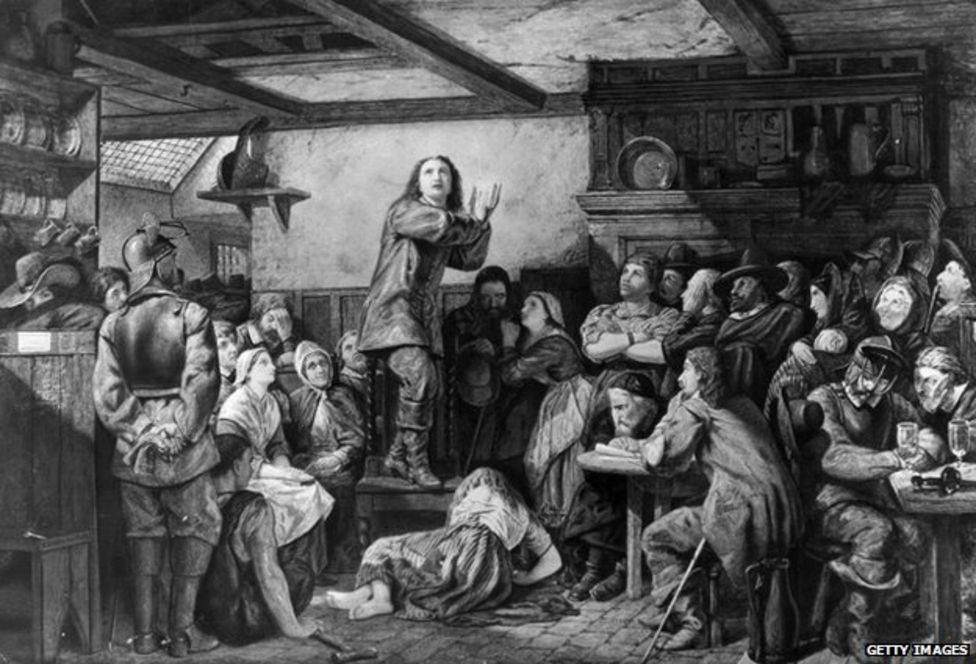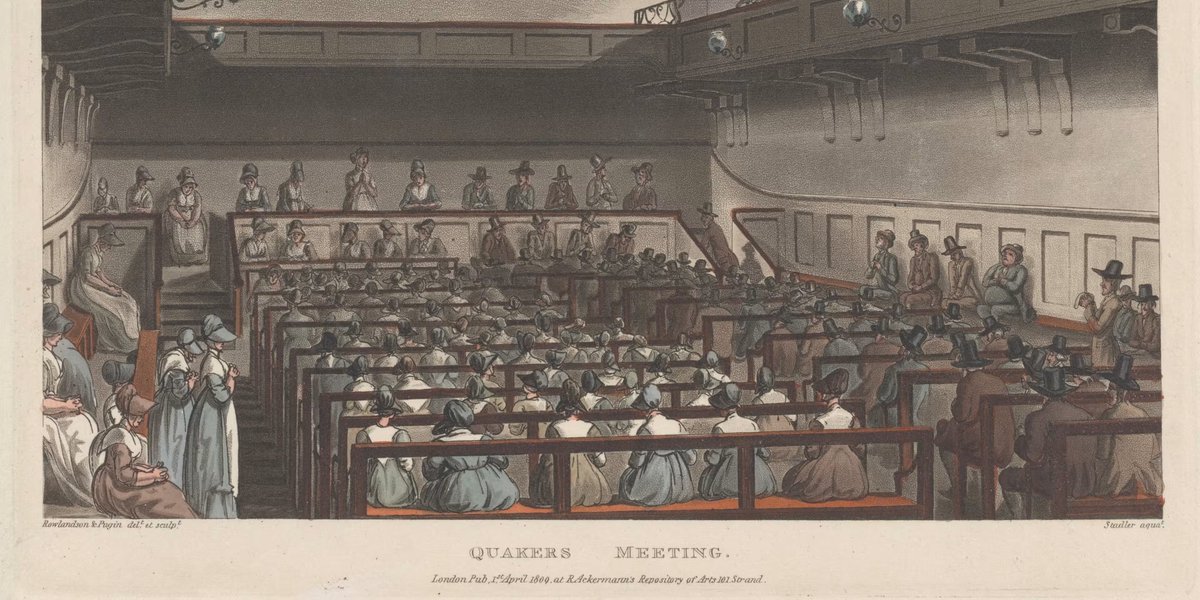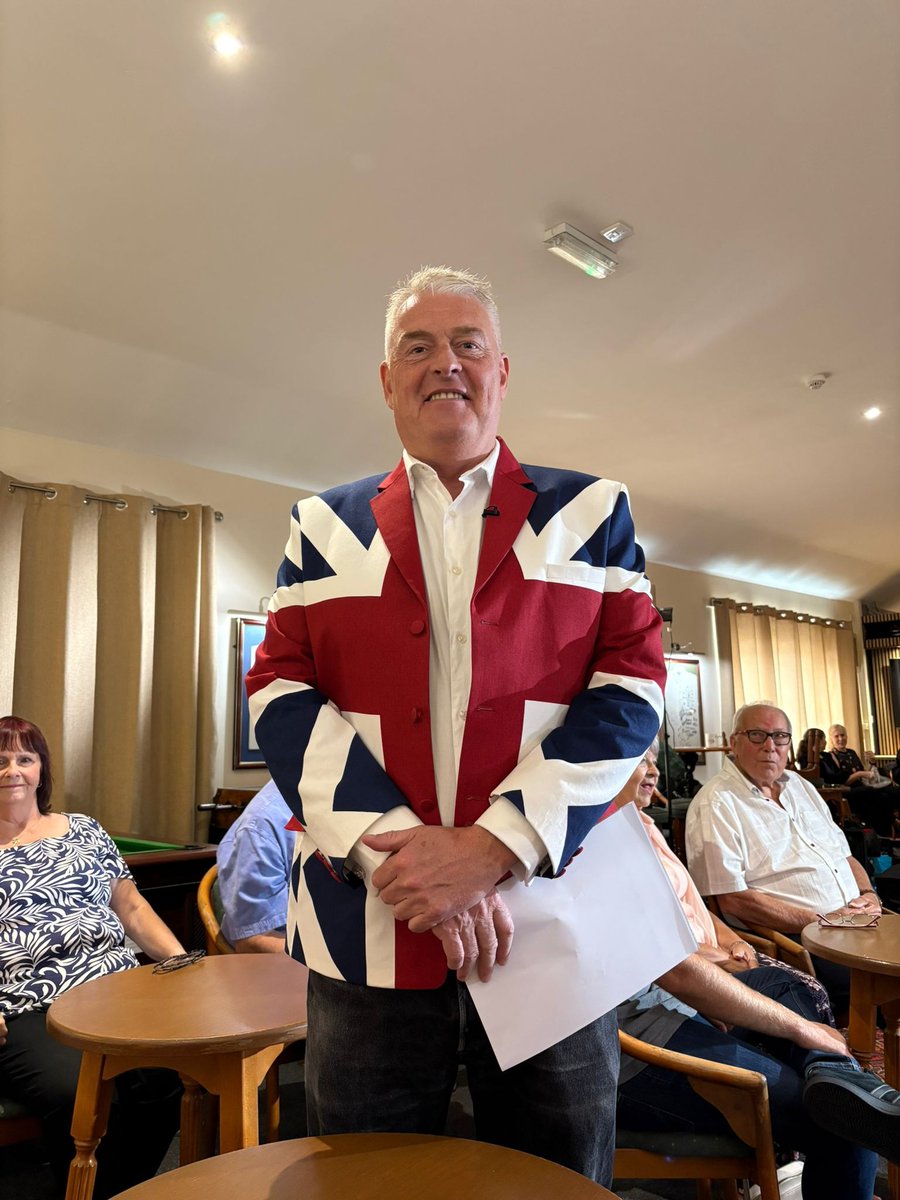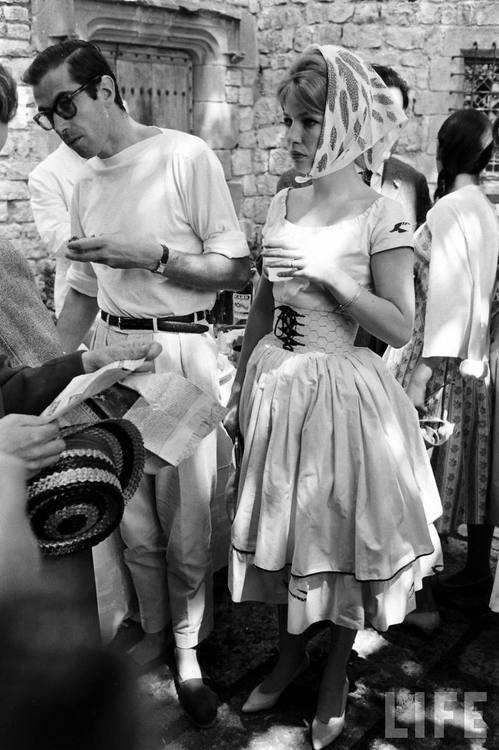Twitter has a character limit, so I assume (intelligent) people will read context and know I'm talking about interior design and fashion, which today are coded as "gay interests" for men. Not painting or architecture, which carry no such stigma.
I will elaborate 🧵
I will elaborate 🧵
https://twitter.com/u_m_a_m_i/status/1946483913934749753
IMO, it's absolutely true that American Protestants were uniquely against certain forms of ornamentation, including fashion. For instance, the Quakers deliberately shunned adornment and extravagance in dress, stressing the importance of simplicity. 

In his book "The Suit," Christopher Breward writes about how Quakers would talk about "troubling lapses into self-fashionableness by wayward members" during meetings. However, the Quakers were small in number and often seen as unusual by their fellow non-Quaker community members 

The Methodists had a larger following, especially among the working class. Their views on dress can be read in a 1790 book written by their leader John Wesley, simply titled "Advice to the People Called Methodists, with Regard to Dress."
It says: "Buy no velvets, no silks, ...
It says: "Buy no velvets, no silks, ...

... no fine linen, no superfluities, no mere ornaments, though ever so much in fashion. Wear nothing, though you have it already, which is of a glaring colour, or which is in any kind of gay, glistering, showy; nothing made in the very height of fashion, nothing to attract ... 

the eyes of bystanders [...] Neither do I advise men, to wear coloured waistcoats, shining stockings, glittering or costly buckles or buttons, either on their coats or on their sleeves."
The same is true for other large American Protestant groups: Presbyterians, Baptists, etc.
The same is true for other large American Protestant groups: Presbyterians, Baptists, etc.
They all shared an anti-materialist view of the world that believed we should turn our eyes away from worldly temptations and focus on charity and God. Dress should be plain, modest, and "proper," not ostentatious or vain. Thus, we get simple, plain clothing. 

Many will wonder how we got the suit, as to them, this is "dressing up" (read: fancy). But it's important to remember that the suit emerged as a plainer alternative to earlier dress. American colonists wore breeches, stockings, doublets, jerkins, and long coats with embroidery 



Thus, the suit rose partly because it was considered plainer and more "masculine." It's also worth remembering that Americans popularized the two-piece suit as business wear, dropping the waistcoat that would have been considered standard back in Britain. Now it's even plainer! 

IMO, American Protestants have always viewed certain forms of aesthetics with suspicion, such as ornate dress and interior decor, favoring instead plain, functional interiors and simple clothing. They believed this signaled Christian ethics and democratic norms.
One only has to remember that many American colonists were English migrants (migrants!), often Puritans. Back in England, clothes carried important social and political connotations. The English Puritans wanted to rid the Church of England of Catholic influence. 

During the English Civil War, the Puritans sided with the Parliamentarians, while the Cavaliers supported the royalists. Since the Puritans wore simple clothes and the Cavaliers wore more ornate dress, the Puritans carried their suspicion of "fancy clothes" when they landed in US 



This discussion started because I said it was once believed that women and gay men are born with a sense for aesthetics, like how some have a talent for singing. This is how we get things like "Queer Eye for the Straight Guy." The gay man will help you with his super powers! 

IMO, it's not the case that women and gay men are born with certain skills. They simply don't feel pressured to reject certain areas of aesthetic life. For a long time, women were excluded from "serious" domains, such as business, government, and academia.
Thus, "frivolous" areas, such as interior design and fashion, were left to them, while men lived a "life of the mind." I also believe that many of our stereotypes for gay men came from the trial of Oscar Wilde, who was into theatre, famous for bon mots, and very fashionable. 



The combination of all these legacies: American Protestantism, English Civil War, gender divide in work, and the history of gay stereotypes, means that many American men are deeply uncomfortable with developing an interest in certain things, such as interior design and fashion 

They believe being too interested in decor or fashion makes you "less of a man" by aligning with women or gay men. You only have to read the replies to the original post to see this. If a man goes shopping for lamps with his wife, he has to frown, if he goes at all. Smile = gay. 





In his essay "The Secret Vice," originally published in the 1970s, Tom Wolfe suggested that the average American man would be more comfortable reading Playboy in public than a clothing catalog. I think he was exaggerating ... but not by much. 

For some reason, certain areas of aesthetic life, such as paintings and architecture, have escaped this stigma.
Twitter has character limits, so I am limited in what I'm able to cover. But I thought it was obvs I'm talking about dress and interior decor
Twitter has character limits, so I am limited in what I'm able to cover. But I thought it was obvs I'm talking about dress and interior decor
https://x.com/u_m_a_m_i/status/1946483913934749753
• • •
Missing some Tweet in this thread? You can try to
force a refresh

































